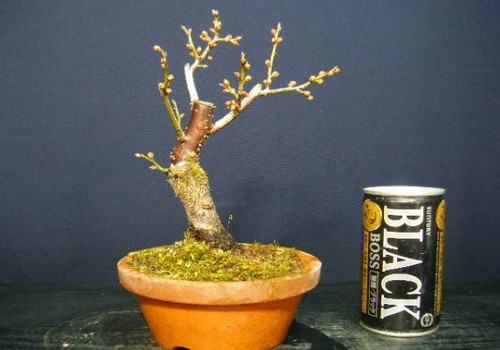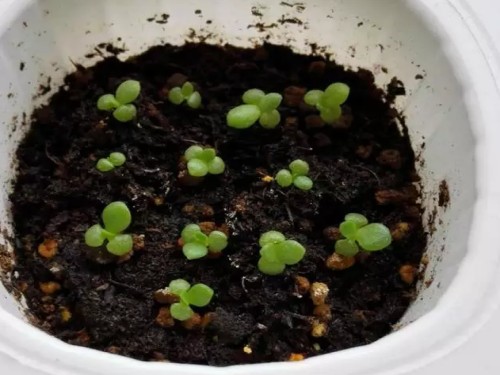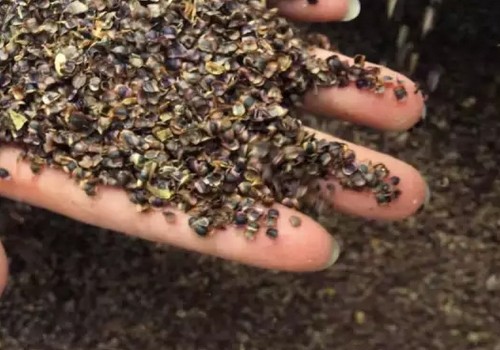Modeling method of five-color plum bonsai
The five-color plum used to make bonsai can be propagated by cutting, which is generally carried out in the growing season. The sturdy annual branches are cut and inserted in sand or vermiculite, and maintained under the shade shed to keep the soil and air moist. After about 40 to 50 days of rooting, the seedlings can be divided into pots.

The five-colored plum branches are soft and drooping, which is especially suitable for making cliff-style bonsai. In addition, it can also be processed into different forms of bonsai, such as single dry type, double dry type, oblique dry type, facing water type, dry type and so on. The leaves of five-colored plum are larger, and the crown is often chic and natural, so it is not necessary to tie it into a circular shape. Because of its rapid growth, strong germination and resistance to pruning, the modeling method should be mainly pruning, supplemented by flat binding and traction; the branches of five-colored plum are straight and can be bent with wire. It can also be modeled by the method of "cutting dry and storing branches" of the Lingnan School.
Colored plum grows fast, so the branches and leaves that affect the shape should be cut off in time in order to keep the tree shape beautiful. the overlong shoots should be cut short after each flowering, and the plants should be re-cut at the end of autumn and before entering the house at the beginning of autumn and winter. In winter, if the room temperature is more than 15 ℃, the plant can grow and blossom normally, and it should be properly watered, fertilized and pruned. If it can not maintain such a high temperature, control watering, stop fertilization, and make the plant dormant, more than 8 ℃ can safely survive the winter. Turn the pot once every spring, and trim the plant again, cutting off dead branches, weak branches and other branches that affect the shape of the tree.
The five-color plum bonsai shape is mainly curved stem or oblique stem round head shape, which requires hanging roots to show claws, tree trunks zigzag, dense and round branches and leaves, flowers like brocade.
Therefore, the modeling focuses on three aspects:
First, the upper basin should pay attention to the layout of the lateral root, purposefully expose the thick lateral root to the basin surface. The method is to put small pebbles under the lateral root, and it can also circle the root. after growing for a period of time, it can gradually remove the soil, wash the water, lift the root and expose the root, showing the shape of hanging root and showing claws.
Second, the trunk is bent, scratched and pricked. If the curvature of the trunk is not enough, it should be treated by pulling and bending, and if the trunk is too smooth, it should be scratched and pricked, so as to promote the tumorous section of the trunk, showing an old state.
Third, the branch shape mainly depends on pruning, and the side branches are re-trimmed in winter. Five-color plum is easy to grow opposite branches, should focus on the treatment of large lateral branches, generally cut one to keep one, or one long and one short. In summer, you should often pick the heart or cut short, and pay attention to shrinking branches after each flower, so that the branches are short and dense, and the crown is compact and round.
Time: 2019-06-11 Click:
- Prev

How to manage landscape flower seeds after sowing
The reproduction of flowers is divided into sexual reproduction and asexual reproduction. Sexual reproduction is the reproduction of offspring by sowing seeds. Asexual reproduction, also known as vegetative reproduction, uses part of the plant's vegetative organs to grow into new plants. there are cutting, ramet, grafting and striping methods. Among them
- Next

Sowing and Propagation methods of Chrysanthemum morifolium Seeds
Chrysanthemum morifolium is an excellent flower and foliage plant with large color and dense branches and leaves, and can reproduce on its own. So, when will the chrysanthemum seeds be sown? The following editor will introduce to you the methods of sowing and propagation of Chrysanthemum morifolium seeds. Golden rooster chrysanthemum mainly sows and propagates its seeds from March to April every year.
Related
- Fuxing push coffee new agricultural production and marketing class: lack of small-scale processing plants
- Jujube rice field leisure farm deep ploughing Yilan for five years to create a space for organic food and play
- Nongyu Farm-A trial of organic papaya for brave women with advanced technology
- Four points for attention in the prevention and control of diseases and insect pests of edible fungi
- How to add nutrient solution to Edible Fungi
- Is there any good way to control edible fungus mites?
- Open Inoculation Technology of Edible Fungi
- Is there any clever way to use fertilizer for edible fungus in winter?
- What agents are used to kill the pathogens of edible fungi in the mushroom shed?
- Rapid drying of Edible Fungi

